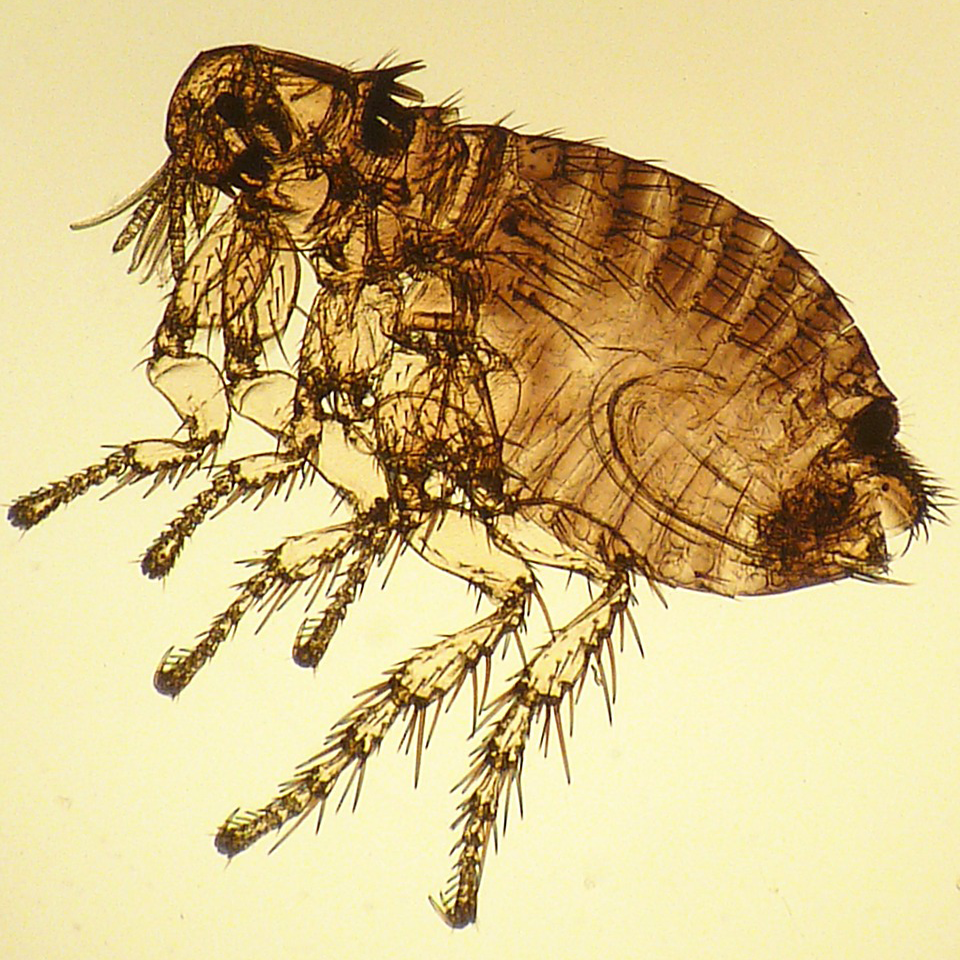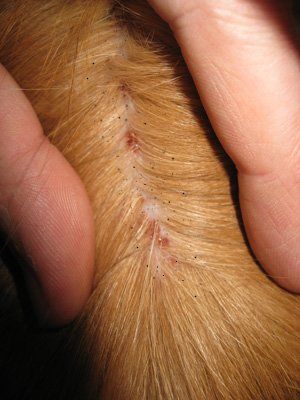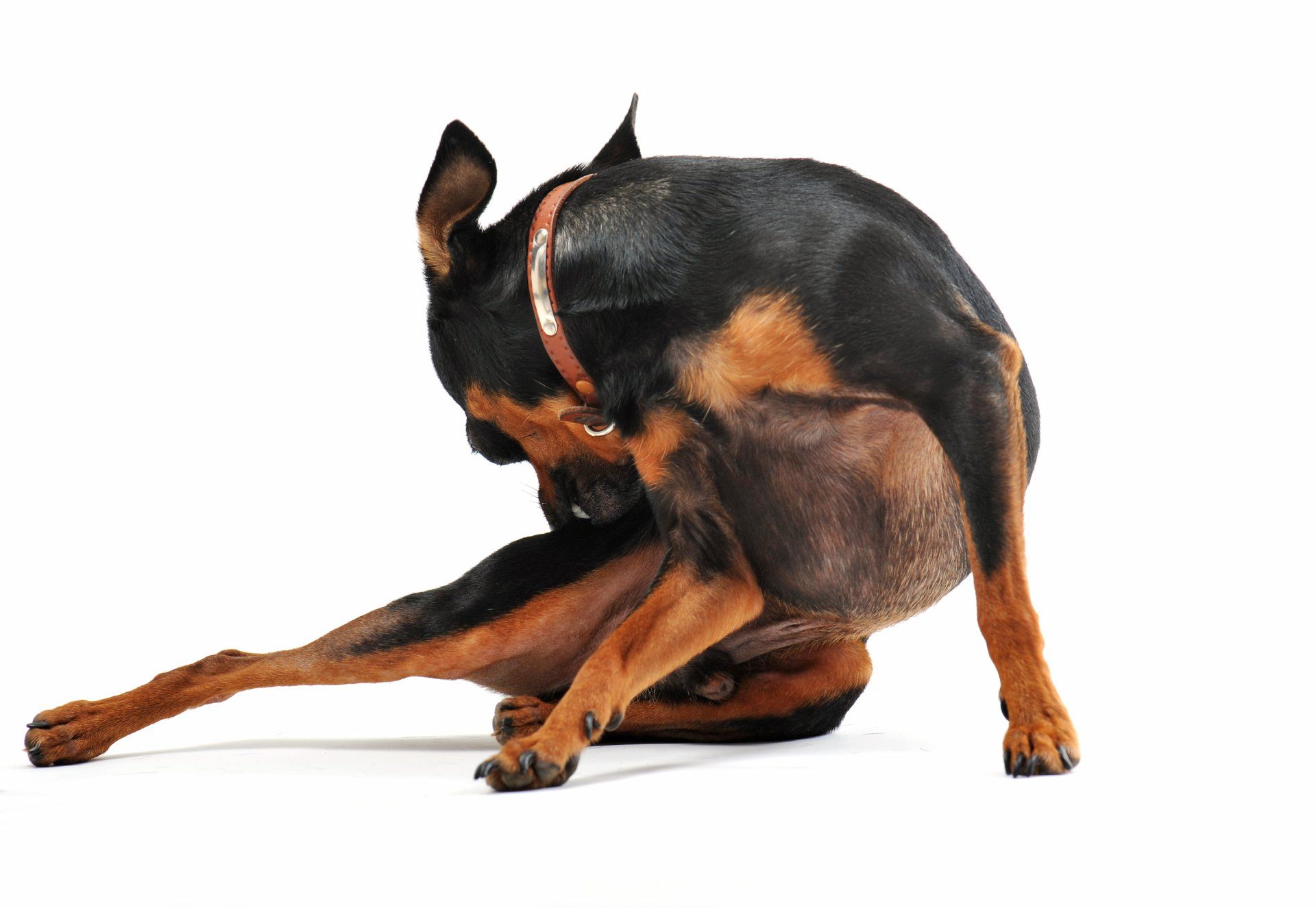Visit Our Online Shop
Follow Us
Bilton Veterinary Centre
259 Bilton Road
Rugby
Warwickshire
CV22 7EQ
Reception: 01788 812650
Repeat Prescriptions: 01788 817462
In-Patients: 01788 813498
FLEA ADVICE
One of the most common subjects that we get questions on!
What are fleas?
Fleas are small insects which are just visible with the naked eye. They commonly infect many wild and domestic animals. They are a problem to animals and humans by their need to feed on blood and therefore their need to spend part of their life-cycle on a living creature.
Although there are different species of fleas, it tends to be the cat flea (Ctenocephalides felis) which causes most problems with both dogs and cats! Pictured above (highly magnified!), you can see the powerful legs used for jumping huge distances and also the sharp piercing mouth-parts used for sucking blood.
Fleas are small insects which are just visible with the naked eye. They commonly infect many wild and domestic animals. They are a problem to animals and humans by their need to feed on blood and therefore their need to spend part of their life-cycle on a living creature.
Although there are different species of fleas, it tends to be the cat flea (Ctenocephalides felis) which causes most problems with both dogs and cats! Pictured above (highly magnified!), you can see the powerful legs used for jumping huge distances and also the sharp piercing mouth-parts used for sucking blood.

Why do they cause a problem?
As explained above, fleas need to suck blood to obtain their nutrients required to survive and reproduce. Most of the problems caused by fleas are caused by either their presence on the body or the act of sucking blood. A range of signs can be seen with animals affected by fleas. These can range in severity from mild irritation, itching and scratching, to marked irritation, hair loss and self trauma. In extreme cases some animals may even become anaemic due to blood loss caused by large amounts of fleas feeding on the animal (70 fleas will ingest 1 ml of blood a day!)
Some animals are actually allergic to the flea bite (actually the flea' saliva is thought to be the culprit) and this can make matters much worse as it may only take 1 single flea to trigger an allergic reaction. Fleas can also be responsible for the spread of certain blood borne diseases and parasites. To name just a couple, fleas can transmit a particular type of tapeworm (Dipylidium caninum) to dogs or cats, or cause a condition called Haemobartonellosis in cats which is an anaemia caused by a parasite which destroys red blood cells.
How do I know if my animal has fleas?
Often the first sign you see are signs of irritation . Fleas should always be considered if your pet starts to scratch. If you part the coat so you can see the skin - you may happen to actually see a flea. They are very small, move very quickly and often jump as soon as you see them. More likely you see the presence of "flea-dirt", which is tiny little black specks just visible on the skin surface. Flea-dirt is actually the faeces of the flea containing digested blood. If you see this, then it is very likely that your animal has got fleas.
As explained above, fleas need to suck blood to obtain their nutrients required to survive and reproduce. Most of the problems caused by fleas are caused by either their presence on the body or the act of sucking blood. A range of signs can be seen with animals affected by fleas. These can range in severity from mild irritation, itching and scratching, to marked irritation, hair loss and self trauma. In extreme cases some animals may even become anaemic due to blood loss caused by large amounts of fleas feeding on the animal (70 fleas will ingest 1 ml of blood a day!)
Some animals are actually allergic to the flea bite (actually the flea' saliva is thought to be the culprit) and this can make matters much worse as it may only take 1 single flea to trigger an allergic reaction. Fleas can also be responsible for the spread of certain blood borne diseases and parasites. To name just a couple, fleas can transmit a particular type of tapeworm (Dipylidium caninum) to dogs or cats, or cause a condition called Haemobartonellosis in cats which is an anaemia caused by a parasite which destroys red blood cells.
How do I know if my animal has fleas?
Often the first sign you see are signs of irritation . Fleas should always be considered if your pet starts to scratch. If you part the coat so you can see the skin - you may happen to actually see a flea. They are very small, move very quickly and often jump as soon as you see them. More likely you see the presence of "flea-dirt", which is tiny little black specks just visible on the skin surface. Flea-dirt is actually the faeces of the flea containing digested blood. If you see this, then it is very likely that your animal has got fleas.

How does my animal get fleas?
The life-cycle of a flea is quite complicated. Believe it not, when there is a flea problem, what you see on the animal is only 5% of the total flea population - the other 95% are on the ground (often in your house!) Fleas need to feed off a host animal in order to reproduce and lay eggs. Within hours, these eggs will have dropped off the animal's coat onto the floor where they hatch to form larvae. These tiny, maggoty like creatures are highly mobile and are afraid of light so crawl into carpet pile, under furniture etc, where they feed off organic debris such as dust and skin flakes . After a short period of time these larvae form incredibly sticky cocoons (about 5 mm long) where they develop into adult fleas, which emerge after a few weeks. These new adults are going to be hungry and therefore actively seek out the source of a meal - your pet. Hence the life-cycle is complete.
This means that animal to animal transmission is quite unusual and that most infestations will occur from contact with an infested environment.
What can I do if my pet has fleas?
As with many other conditions - prevention is better than cure. There are a number of prescription treatments/prevention for fleas available only from your vet. These are very effective, safe, and often have a residual action so will prevent the animal becoming re-infested for a period of time. These come in a variety of forms, such as sprays, injections or spot-on pipettes of liquid that you can apply to the back of the neck. As well as treating the affected animals you should also:
The life-cycle of a flea is quite complicated. Believe it not, when there is a flea problem, what you see on the animal is only 5% of the total flea population - the other 95% are on the ground (often in your house!) Fleas need to feed off a host animal in order to reproduce and lay eggs. Within hours, these eggs will have dropped off the animal's coat onto the floor where they hatch to form larvae. These tiny, maggoty like creatures are highly mobile and are afraid of light so crawl into carpet pile, under furniture etc, where they feed off organic debris such as dust and skin flakes . After a short period of time these larvae form incredibly sticky cocoons (about 5 mm long) where they develop into adult fleas, which emerge after a few weeks. These new adults are going to be hungry and therefore actively seek out the source of a meal - your pet. Hence the life-cycle is complete.
This means that animal to animal transmission is quite unusual and that most infestations will occur from contact with an infested environment.
What can I do if my pet has fleas?
As with many other conditions - prevention is better than cure. There are a number of prescription treatments/prevention for fleas available only from your vet. These are very effective, safe, and often have a residual action so will prevent the animal becoming re-infested for a period of time. These come in a variety of forms, such as sprays, injections or spot-on pipettes of liquid that you can apply to the back of the neck. As well as treating the affected animals you should also:
- Treat all in-contact animals. If one of your pets has fleas, it is likely that the other will and you will need to eliminate all sources.
- Try to reduce the environmental population (remember only 5% of the total population is on the animal!) this can be done by thoroughly vacuuming all carpets and floor surfaces. Concentrate on dark areas and areas where the animal likes to lie/walk. You need to think about areas such as under rugs, sofas, shelves etc.
- Wash bedding and covers that the animal comes into contact with. Use a hot-wash where possible.
- If a serious problem, you may have to treat the house with an insecticidal spray. Your vet will be able to advise you on this should the need arise.

How can I prevent my pets getting a flea problem?
If you are concerned about fleas, one of the vets or nurses would be happy to give you any further advice that you may need. Don't panic - as even those animals that are kept in the best and cleanest conditions are still likely to get fleas at some point in their life!
- Use a prescription flea product on your pet. A lot of the over-the-counter products just won’t work.
- Make sure you treat ALL the pets in the house. Be careful of stray/other cats/dogs that may wonder in or come and visit. “We don’t treat the old cat as he doesn’t go out…” is something we hear often. If fleas do get into the house - they will have a field day on him!
- Make sure you use the correct strength of product - usually based on your pet’s weight.
- Try to use the SAME product for each species.
- Make sure you stick to the prescribed re-treatment intervals.
- Make sure you read any washing/bathing/swimming instructions for the products used.
- Ensure you have flea cover ALL YEAR ROUND!
We have access to lots of different types of EXCELLENT control - including spot-ons, tablets and wearable preventatives.
What do I do if I am worried?
If you are concerned about fleas, one of the vets or nurses would be happy to give you any further advice that you may need. Don't panic - as even those animals that are kept in the best and cleanest conditions are still likely to get fleas at some point in their life!

Quick Links
Contact Us
Bilton Veterinary Centre
259 BIlton Road
Rugby
Warwickshire CV22 7EQ
Tel: 01788 812650
email: enquiries@biltonvets.co.uk
Opening Hours
- Monday
- -
- Tuesday
- -
- Wednesday
- - -
- Thursday
- -
- Friday
- -
- Saturday
- -
- Sunday
- Closed